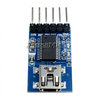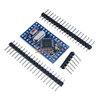Hi all, I have been lucky recently and been given boxes of electronics. From test equipment to components. It is all a little dated but nonetheless nice to have.
Serial port Pico scopes etc probably not worth keeping but to my question... In the boxes I found several PicKit 2 and 3 programmers. I am seriously looking into studying some kind of programming for micro controllers but have no idea which would be easier. Arduino with readily available sketches and large forums or PicKit which I know zero about.
I have looked on Youtube for both but being a complete novice, neither really made much sense.
The Arduino uses Atmega (as far as I know). That can be programmed via uploading a sketch?. The Picket is uploaded via Mlab and downloaded to a specific micro controller?. Are they compatible?. Can a program be uploaded to PicKet and downloaded to Arduino board?. Sorry for the silly questions but I have never played with micros. Is one better than the other?. What would you recommend I start with?
Thanks for any information you can give and a very merry xmas to you all.
Martin
Serial port Pico scopes etc probably not worth keeping but to my question... In the boxes I found several PicKit 2 and 3 programmers. I am seriously looking into studying some kind of programming for micro controllers but have no idea which would be easier. Arduino with readily available sketches and large forums or PicKit which I know zero about.
I have looked on Youtube for both but being a complete novice, neither really made much sense.
The Arduino uses Atmega (as far as I know). That can be programmed via uploading a sketch?. The Picket is uploaded via Mlab and downloaded to a specific micro controller?. Are they compatible?. Can a program be uploaded to PicKet and downloaded to Arduino board?. Sorry for the silly questions but I have never played with micros. Is one better than the other?. What would you recommend I start with?
Thanks for any information you can give and a very merry xmas to you all.
Martin



